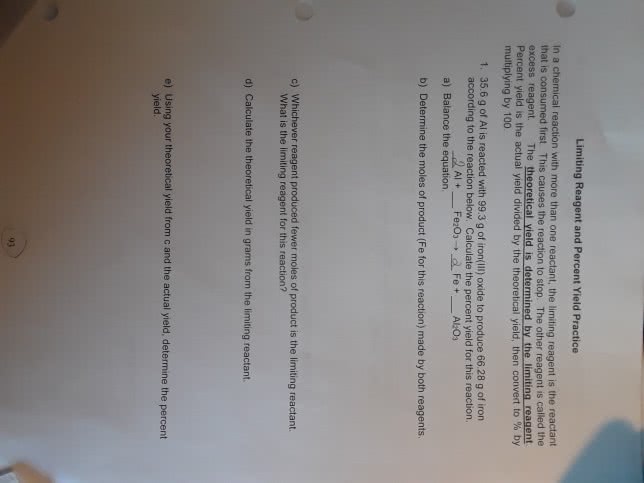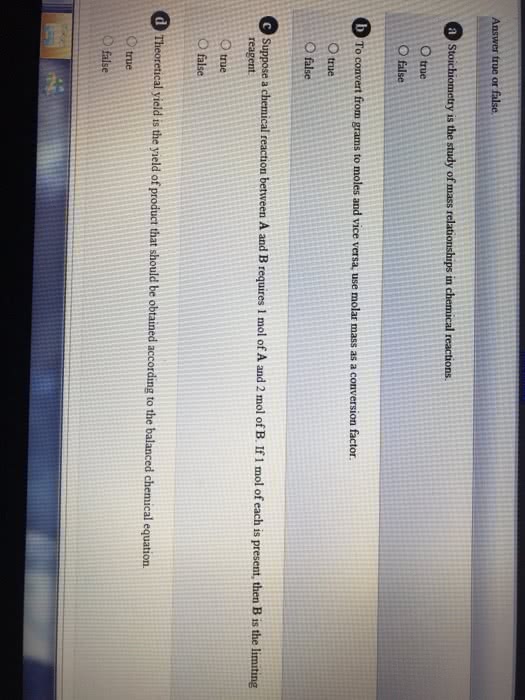CHEM103 Study Guide - Quiz Guide: Limiting Reagent, Stoichiometry, Ionic Compound
Document Summary
Reaction stoichiometry: description of the quantitative relationships among substances as they participate in chemical reactions. Limiting reactants: the reactant in a chemical reaction that limits the amount of product that can be formed, the reaction will stop when all of the limiting reactant is consumed. Theoretical yield: the amount of product that can be made in a chemical reaction based on the amount of limiting reactant. Is the amount of product actually produced by a chemical reaction. In (aq) solution, water is the solvent: solute. Molarity: calculating and using in calculations: molarity is the amount of solute (in moles) divided by the volume of solution (in liters). Dilution: making a solution less concentrated by adding more solvent. Solubility and what happens when you dissolve something. Electrolyte and nonelectrolyte solutions: electrolyte solution. A chemical compound that conducts electricity by changing into ions when melted or dissolved into a solution. An example of an electrolyte is sodium chloride.



